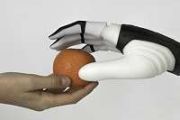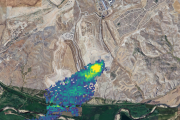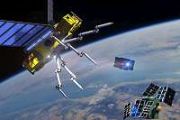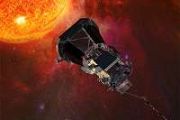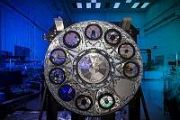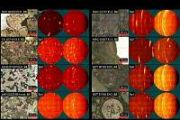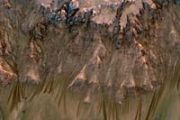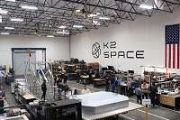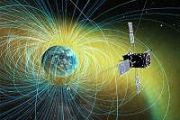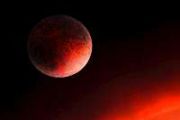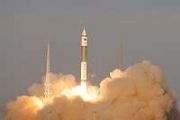
Copernical Team
Register for ESA’s Living Planet Symposium in Bonn

The time has come to register to attend the European Space Agency’s Living Planet Symposium – one of the largest Earth observation conferences in the world. Taking place on 23–27 May 2022 in Bonn, Germany, and jointly organised with the German Aerospace Center, this prestigious event allows all attendees to hear first-hand about the latest scientific findings on our planet. Attendees will also hear how observing Earth from space supports environmental research and action to combat the climate crisis, learn about novel Earth observing technologies and, importantly, learn about the new opportunities emerging in the rapidly changing sector
Cosmic particle accelerator at its limit
 With the help of special telescopes, researchers have observed a cosmic particle accelerator as never before. Observations made with the gamma ray observatory H.E.S.S. in Namibia show for the first time the course of an acceleration process in a stellar process called a nova, which comprises powerful eruptions on the surface of a white dwarf.
A nova creates a shock wave that tears through
With the help of special telescopes, researchers have observed a cosmic particle accelerator as never before. Observations made with the gamma ray observatory H.E.S.S. in Namibia show for the first time the course of an acceleration process in a stellar process called a nova, which comprises powerful eruptions on the surface of a white dwarf.
A nova creates a shock wave that tears through The start of the birth of planets in a binary star system observed
 Astronomers have observed primordial material that may be giving birth to three planetary systems around a binary star in unprecedented detail.
Bringing together three decades of study, an international group of scientists have observed a pair of stars orbiting each other, to reveal that these stars are surrounded by disks of gas and dust. Research published in The Astrophysical Journal, s
Astronomers have observed primordial material that may be giving birth to three planetary systems around a binary star in unprecedented detail.
Bringing together three decades of study, an international group of scientists have observed a pair of stars orbiting each other, to reveal that these stars are surrounded by disks of gas and dust. Research published in The Astrophysical Journal, s Sol 3411: Bonanza
 After significant churn in Monday's planning, today turned out to be a single sol's worth of untargeted science. That left GEO with only a ChemCam AEGIS activity, where ChemCam automatically identifies and targets an interesting rock near the rover by itself. ENV than planned a bonanza of atmospheric monitoring activities, as we had power to spare.
This included 7 dust devil movies with 4
After significant churn in Monday's planning, today turned out to be a single sol's worth of untargeted science. That left GEO with only a ChemCam AEGIS activity, where ChemCam automatically identifies and targets an interesting rock near the rover by itself. ENV than planned a bonanza of atmospheric monitoring activities, as we had power to spare.
This included 7 dust devil movies with 4 Esri releases updated land-cover map with new sets of global data
 Governments and businesses across the world are pledging to adopt more sustainable and equitable practices. Many are also working to limit activities that contribute to climate change. To support these efforts, Esri, the global leader in location intelligence, in partnership with Impact Observatory and Microsoft, is releasing a globally consistent 2017-2021 global land-use and land-cover map of
Governments and businesses across the world are pledging to adopt more sustainable and equitable practices. Many are also working to limit activities that contribute to climate change. To support these efforts, Esri, the global leader in location intelligence, in partnership with Impact Observatory and Microsoft, is releasing a globally consistent 2017-2021 global land-use and land-cover map of Sidus Space completes LizzieSat Preliminary Design Review
 Sidus Space, Inc. (NASDAQ:SIDU), a Space-as-a-Service satellite company focused on commercial satellite design, manufacture, launch, and data collection is pleased to announce the successful completion of the LizzieSat (LS) Preliminary Design Review (PDR).
A PDR ensures the design and basic system architecture are complete and that there is technical confidence the capability need can be s
Sidus Space, Inc. (NASDAQ:SIDU), a Space-as-a-Service satellite company focused on commercial satellite design, manufacture, launch, and data collection is pleased to announce the successful completion of the LizzieSat (LS) Preliminary Design Review (PDR).
A PDR ensures the design and basic system architecture are complete and that there is technical confidence the capability need can be s Satellogic to launch five satellites on SpaceX Transporter-4 Mission
 Satellogic Inc. (NASDAQ: SATL), a leader in sub-meter resolution satellite imagery collection, reports it has shipped five satellites to be launched in early Q2 from Cape Canaveral. The launch will be part of SpaceX's Transporter-4 mission onboard the highly flight-proven Falcon 9 reusable, two-stage rocket, under SpaceX's Rideshare program.
The upcoming launch includes the first deploymen
Satellogic Inc. (NASDAQ: SATL), a leader in sub-meter resolution satellite imagery collection, reports it has shipped five satellites to be launched in early Q2 from Cape Canaveral. The launch will be part of SpaceX's Transporter-4 mission onboard the highly flight-proven Falcon 9 reusable, two-stage rocket, under SpaceX's Rideshare program.
The upcoming launch includes the first deploymen AST SpaceMobile announces launch deal with SpaceX
 AST SpaceMobile, Inc. (NASDAQ: ASTS), the company building the first and only space-based cellular broadband network accessible directly by standard mobile phones, has announced it has signed a multi-launch agreement with Space Exploration Technologies Corp. ("SpaceX"). In addition to the planned summer launch of the BlueWalker 3 test satellite (BW3), the agreement covers the launch of the first
AST SpaceMobile, Inc. (NASDAQ: ASTS), the company building the first and only space-based cellular broadband network accessible directly by standard mobile phones, has announced it has signed a multi-launch agreement with Space Exploration Technologies Corp. ("SpaceX"). In addition to the planned summer launch of the BlueWalker 3 test satellite (BW3), the agreement covers the launch of the first Slingshot Aerospace raises $25M in Series A-1 Funding Round
 Slingshot Aerospace, Inc., a company building world-class space simulation and analytics products to accelerate space sustainability, has announced that it has raised $25 million in Series A-1 funds. The new money is in addition to the $9.6 million Series A funds raised in October 2020, bringing the total raised for the A and A-1 rounds to $34.6 million to date.
The oversubscribed A-1 rou
Slingshot Aerospace, Inc., a company building world-class space simulation and analytics products to accelerate space sustainability, has announced that it has raised $25 million in Series A-1 funds. The new money is in addition to the $9.6 million Series A funds raised in October 2020, bringing the total raised for the A and A-1 rounds to $34.6 million to date.
The oversubscribed A-1 rou Exploring the Rubin Observatory's giant data acquisition system
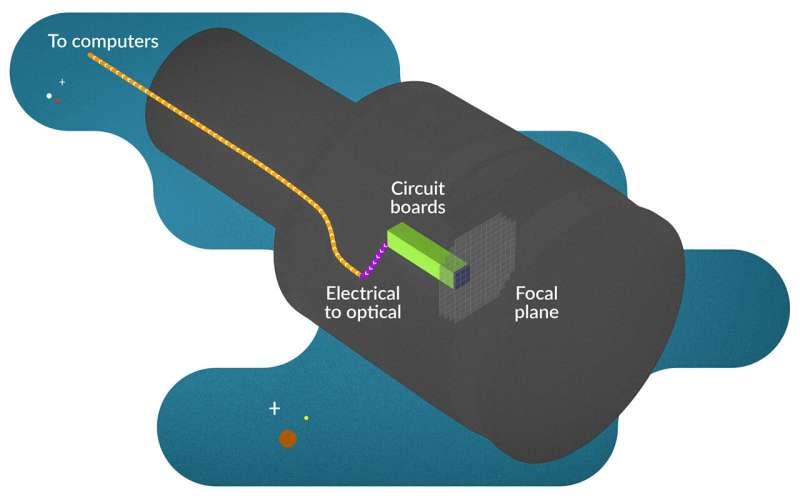
When the Vera C. Rubin Observatory starts taking pictures of the night sky in a few years, its centerpiece 3,200 megapixel Legacy Survey of Space and Time camera will produce an enormous trove of data valuable to everyone from cosmologists to the people who track asteroids that might collide with Earth.
You may already have read about how the Rubin Observatory's Simonyi Survey Telescope will gather light from the universe and shine it on the Department of Energy's LSST Camera, how researchers will manage the data that comes from the camera, and the myriad things they'll try to learn about the universe around us.
What you probably haven't read about is how researchers will get that mountain of incredibly detailed images off the back of the world's largest digital camera, down fiber optic cables and into the computers that will send them off Cerro Pachón in Chile and out into the world.
Gregg Thayer, a scientist at the U.S. Department of Energy's SLAC National Accelerator Laboratory, is the person in charge of Rubin's data acquisition system, which handles this essential process.









